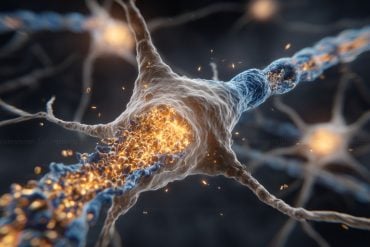Summary: Researchers have identified five biological variants of Alzheimer’s disease through cerebrospinal fluid analysis, shedding new light on the complexity of the condition. These variants differ in amyloid production, blood-brain barrier integrity, nerve cell growth, protein synthesis, and immune system functioning.
This breakthrough highlights the importance of personalized medicine in Alzheimer’s treatment, as a drug that works for one variant may be ineffective or even harmful for another. The study paves the way for targeted therapies tailored to specific Alzheimer’s variants, potentially improving treatment outcomes.
Key Facts:
- Alzheimer’s disease has five distinct biological variants, affecting amyloid production, blood-brain barrier integrity, and more.
- Tailored treatments based on these variants may enhance the effectiveness of Alzheimer’s drugs.
- Personalized medicine could lead to improved treatment outcomes and reduced risk of side effects for Alzheimer’s patients.
Source: University of Amsterdam
Dutch scientists have discovered five biological variants of Alzheimer’s disease, which may require different treatment. As a result, previously tested drugs may incorrectly appear to be ineffective or only minimally effective.
This is the conclusion of researcher Betty Tijms and colleagues from Alzheimer Center Amsterdam, Amsterdam UMC and Maastricht University.
The research results will be published on 9 January in Nature Aging.
In those with Alzheimer’s disease, the amyloid and tau protein clump in the brain. In addition to these clumps, other biological processes such as inflammation and nerve cells growth are also involved. Using new techniques, the researchers have been able to measure these other processes in the cerebrospinal fluid of patients with amyloid and tau clumps.
Betty Tijms and Pieter Jelle Visser examined 1058 proteins in the cerebrospinal fluid of 419 people with Alzheimer’s disease. They found that there are five biological variants within this group. The first variant is characterized by increased amyloid production. In a second type, the blood-brain barrier is disrupted and there is a reduced amyloid production and less nerve cells growth.
Furthermore, the variants differ in the degree of protein synthesis, the functioning of the immune system, and the functioning of the organ that produces cerebrospinal fluid. Patients with different Alzheimer’s variants also showed differences in other aspects of the disease. For example, the researchers found a faster course of the disease in certain subgroups.
The findings are of great importance for drug research. It means that a drug could only work in one variant of Alzheimer’s disease. For example, medication that inhibits amyloid production may work in the variant with increased amyloid production but may be harmful in the variant with decreased amyloid production. It is also possible that patients with one variant have a higher risk of side effects, while that risk is much lower with other variants.
The next step for the research team is to show that the Alzheimer’s variants do indeed react differently to medicines, so that we can treat everyone with appropriate medicines in the future.
About this Alzheimer’s disease research news
Author: Jack Cairns
Source: University of Amsterdam
Contact: Jack Cairns – University of Amsterdam
Image: The image is credited to Neuroscience News
Original Research: Open access.
“Cerebrospinal fluid proteomics in Alzheimer’s disease patients reveals five molecular subtypes with distinct genetic risk profiles” by Betty M. Tijms et al. Nature Aging
Abstract
Cerebrospinal fluid proteomics in Alzheimer’s disease patients reveals five molecular subtypes with distinct genetic risk profiles
Alzheimer’s disease (AD) is heterogenous at the molecular level. Understanding this heterogeneity is critical for AD drug development.
Here we define AD molecular subtypes using mass spectrometry proteomics in cerebrospinal fluid, based on 1,058 proteins, with different levels in individuals with AD (n = 419) compared to controls (n = 187).
These AD subtypes had alterations in protein levels that were associated with distinct molecular processes: subtype 1 was characterized by proteins related to neuronal hyperplasticity; subtype 2 by innate immune activation; subtype 3 by RNA dysregulation; subtype 4 by choroid plexus dysfunction; and subtype 5 by blood–brain barrier impairment.
Each subtype was related to specific AD genetic risk variants, for example, subtype 1 was enriched with TREM2 R47H. Subtypes also differed in clinical outcomes, survival times and anatomical patterns of brain atrophy.
These results indicate molecular heterogeneity in AD and highlight the need for personalized medicine.








